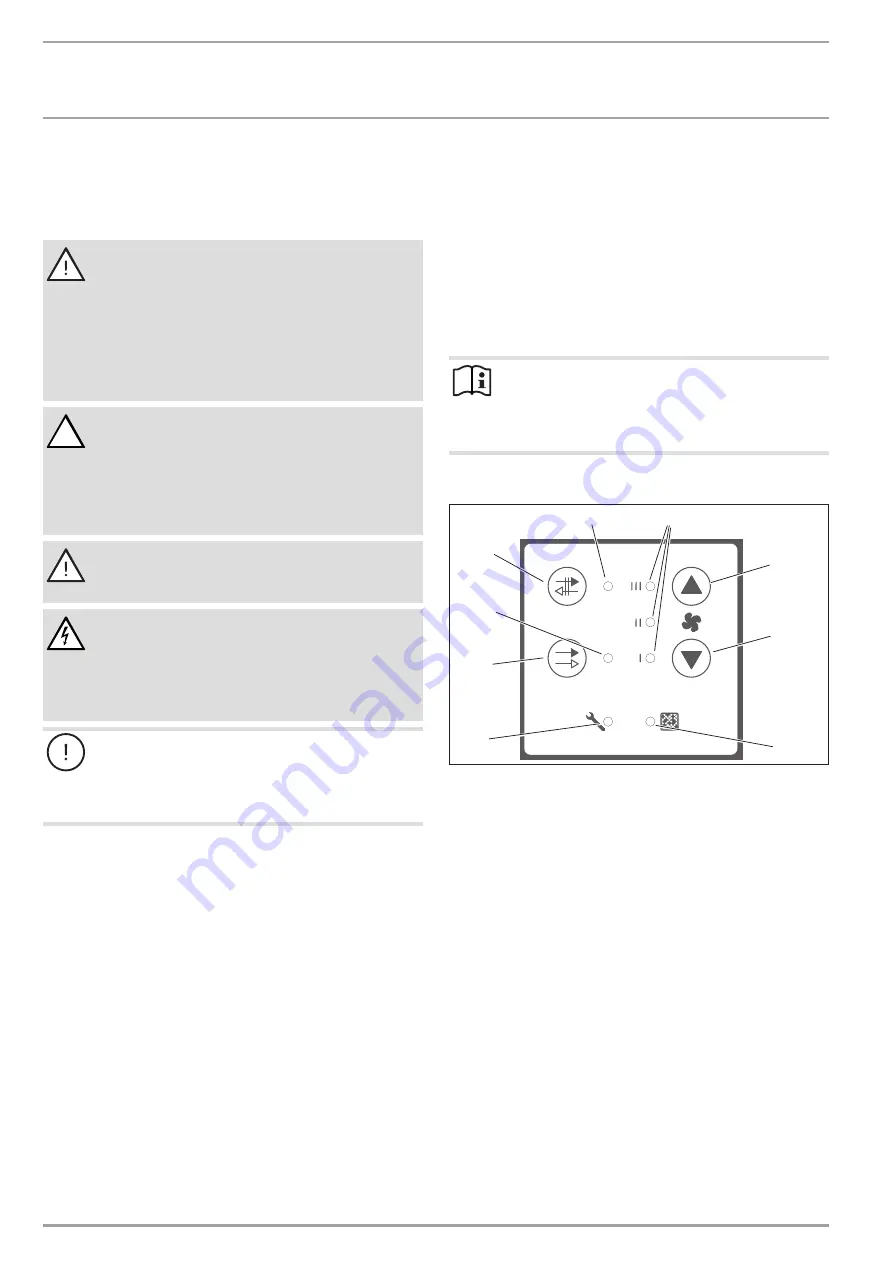
oPErATIoN
Appliance description
18
| LWE 40
www.stiebel-eltron.com
2.3 General safety instructions
We guarantee trouble-free function and operational reliability only
if original accessories and spare parts intended for the appliance
are used.
WARNING Injury
The appliance may be used by children over 8 years of
age and persons with reduced physical, sensory or men-
tal capabilities or a lack of experience and expertise,
provided that they are supervised or they have been
instructed on how to use the appliance safely and have
understood the potential risks. Children must never play
with the appliance. Cleaning and user maintenance must
not be carried out by children without supervision.
!
WARNING Injury
If there is a radio or police announcement ordering win-
dows and doors to be kept closed, disconnect the appli-
ance from the power supply.
Close the internal panel if it is not closed.
f
f
Carefully push the internal panel towards the wall
until the internal panel is closed.
WARNING Injury
Operating the appliance with a partially installed fan unit
may cause injury or may damage the appliance.
WARNING Injury
The discharged cold air can cause condensation to be
formed in the vicinity of the air discharge.
f
f
Ensure that no risk of slipping due to wet conditions
or ice formation occurs on adjacent footpaths and
driveways at low temperatures.
Material losses
Operating the appliance during the building/renovation
phase may damage the appliance.
Never commission the appliance before the building
phase is complete.
2.4 Test symbols
See type plate on the appliance.
3. Appliance description
The appliance is a decentralised ventilation unit with heat recov-
ery. The appliance is designed for the ventilation of individual
rooms or partial ventilation of apartments. The appliance is built
into the external wall. The wall mount casing is a telescopic casing.
This appliance works according to the principle of regenerative
heat transfer. Heat exchange sections are located in the air flow.
These appliances only function in pairs in alternate operation. One
appliance operates for approx. 40 seconds in supply air mode,
the other operates simultaneously in extract air mode. The air
direction is then changed. This means that the total supply air
flow rate is equal to the total extract air flow rate.
In extract air mode, the heat exchanger absorbs the majority of
the thermal energy from the extracted indoor air. Once the fan
has switched to supply air mode, the heat exchanger transfers the
stored thermal energy to the inflowing outdoor air.
A small part of the thermal energy is lost as the air is extracted. At
low outside temperatures, e.g. in winter, the inflowing air cannot
be warmer than the outflowing air.
A filter outside the building reduces the penetration of dust and
other suspended matter. A filter inside the building reduces
contamination of the appliance.
4. Settings
Note
When the appliance is in operation, the internal panel
must be open.
Never restrict the air flow from the appliance with cup-
boards, curtains, etc.
4.1 Controls
D
00000
70
30
3
9
8
1
2
3
4
5
6
7
1 "Fan stage" indicator
2 "UP" button
3 "DOWN" button
4 "Filter" indicator
5 "Fault" indicator
6 "Cross-ventilation" button
7 "Cross-ventilation" indicator
8 "Differential mode" button
9 "Differential mode" indicator
Confirming settings
Some settings have to be confirmed to be accepted. To save the se-
lected value, press the "Differential mode" and "Cross-ventilation"
buttons simultaneously. If the test is successful, this is confirmed
by the indicators lighting up.
4.2 Differential mode
The "Differential mode" button activates the operating mode that
enables the appliance to change the air flow direction at regular
intervals.
4.3 Cross-ventilation
The "Cross-ventilation" button activates the operating mode that
enables appliances to operate without heat recovery.
















































